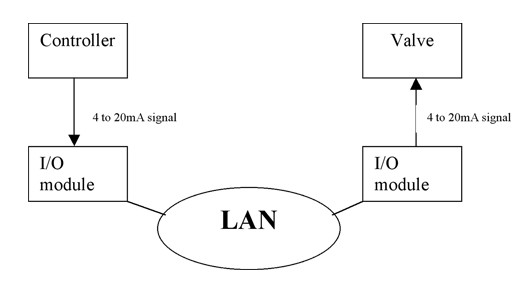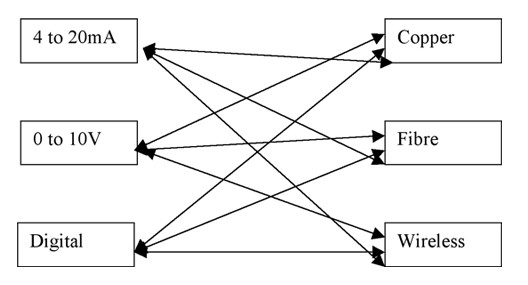Transmission of 4 to 20mA, 0 to 10V and digital signals over an IP network
Sometimes it may be favourable to directly connect to a building controls device or sensor without putting the signal through an outstation or controller. Sensors and actuators can be Ethernet enabled using ‘distributed I/O modules’. Such modules read in analogue or digital signals then transmit them across an IP network to software that has been specifically written to interface with the module.
 This is a good solution for integrators with in-house software capability although a more useful application for installers is to use such converters in pairs, effectively tunnelling values from a sensor across a network then providing a physical interface at the other end, in a more convenient location (next to the nearest outstation / controller perhaps?). By converting to IP, we can use any Ethernet variant whether it is copper, fibre or even wireless depending on what media is preferred or is available for the application.Ethernet extenders use DSL technology (similar to that used to provide broadband internet access to your home - ADSL) to extend Ethernet connections over a single twisted-pair up to a maximum distance of 13km!
This is a good solution for integrators with in-house software capability although a more useful application for installers is to use such converters in pairs, effectively tunnelling values from a sensor across a network then providing a physical interface at the other end, in a more convenient location (next to the nearest outstation / controller perhaps?). By converting to IP, we can use any Ethernet variant whether it is copper, fibre or even wireless depending on what media is preferred or is available for the application.Ethernet extenders use DSL technology (similar to that used to provide broadband internet access to your home - ADSL) to extend Ethernet connections over a single twisted-pair up to a maximum distance of 13km!
This solution can save a large sum in cable installation costs when adding remote controllers / cameras to access control systems or IP CCTV networks. It is possible to use an existing RS485 twisted pair previously employed for PTZ signalling to upgrade your existing camera connection to an IP compliant one.
Ethernet based distributed I/O modules allow any signal type over any media, a specific example is given above, although any of the following permutations are possible:
